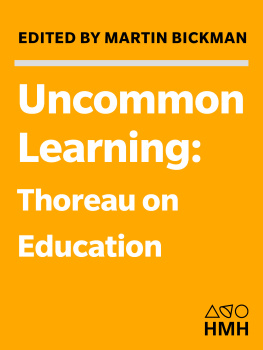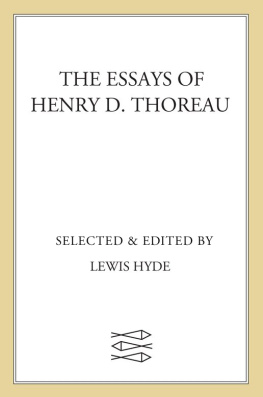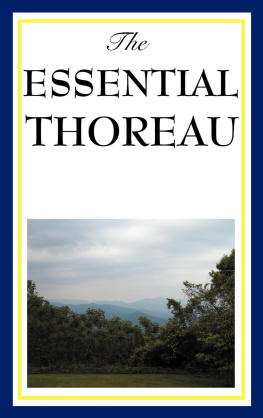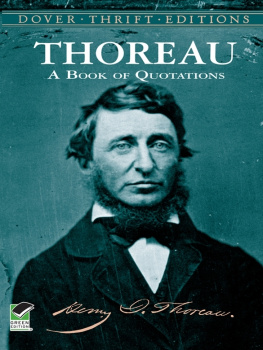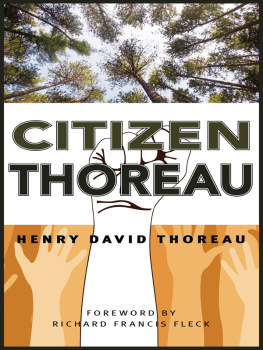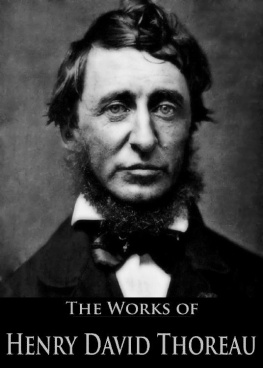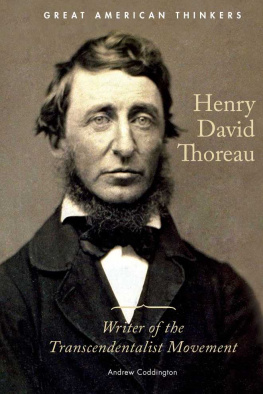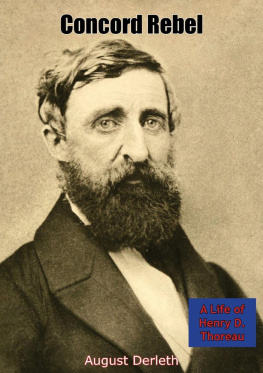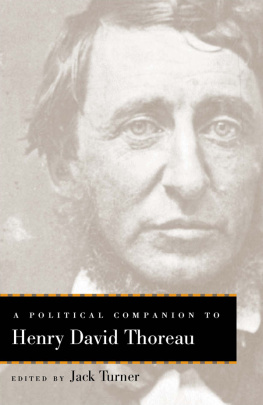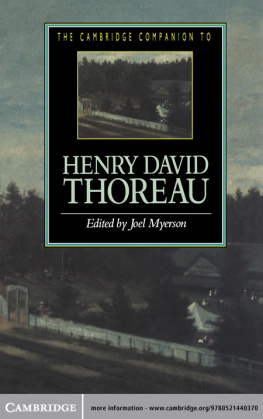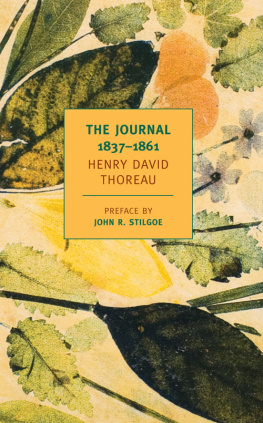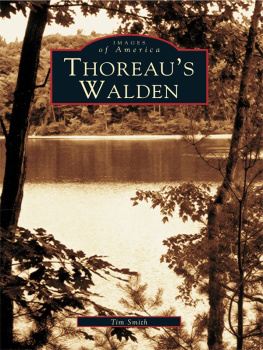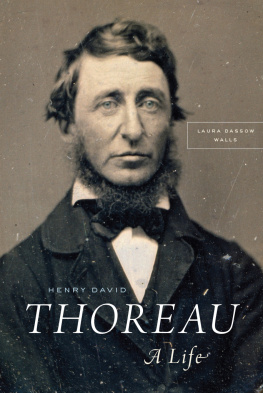thoreaus animals

I would at least know what these things
unavoidably aremake a chart of our life,
know how its shores trend, that butterflies
reappear and whenknow why just this
circle of creatures completes the world.
thoreaus animals

HENRY DAVID THOREAU

Edited by Geoff Wisner
Illustrated by Debby Cotter Kaspari

Copyright 2017 by Geoff Wisner.
All rights reserved.
This book may not be reproduced, in whole or in part, including illustrations, in any form (beyond that copying permitted by Sections 107 and 108 of the U.S. Copyright Law and except by reviewers for the public press), without written permission from the publishers.
Yale University Press books may be purchased in quantity for educational, business, or promotional use. For information, please e-mail (U.K. office).
Designed by Sonia L. Shannon.
Set in Adobe Garamond type by
Tseng Information Systems, Inc.
Printed in the United States of America.
Library of Congress Control Number: 2016941945 ISBN 978-0-300-22376-7 (hardcover : alk. paper)
A catalogue record for this book is available from the British Library.
This paper meets the requirements of nxsI/xIsO Z39.48-1992 (Permanence of Paper).
10 9 8 7 6 5 4 3 2 1
ONCE AGAIN, IN MEMORY OF
Professor Joel Porte

CONTENTS
PREFACE
THE TWO MILLION WORDS of Thoreaus Journal contain a treasury of thoughts and stories about animals. Thoreaus Animals collects many of the best of these, including Thoreaus capture of a screech owl and a flying squirrel in his handkerchief (not at the same time), his discovery of a new species of fish in the waters of Walden Pond, and the adventurous day he spent tracking and capturing his familys runaway pig. The reader feels the mystery of the elusive night warbler and is cheered by the bright spring promise of the bluebird, which carries the sky on its back.
Like its companion volume, Thoreaus Wildflowers, and for similar reasons, Thoreaus Animals is arranged not by different kinds of animal or in simple chronological order but by the days of the year. Like the blooming of cowslips in the spring or asters in the fall, the arrival and departure of animals followed the seasons and gave them meaning. Even the home of the humble muskrat or musquash was an important element in the turning year. So surely as the sun appears to be in Libra or Scorpio, Thoreau wrote in 1859, I see the conical winter lodges of the musquash rising above the withered pontederia and flags.
To showcase the significance of animals in the world of Concordthe most estimable place in all the world, as Thoreau believedI have presented only Thoreaus thoughts and observations about the creatures of Concord and neighboring communities, omitting animals seen in zoos and most of those killed by hunters and trappers. His opinions on the edibility of clams and the sportsmanship of moose hunters can be found in Cape Cod and The Maine Woods.
Along with some of the sketches with which Thoreau illustrated his Journal, this book is enriched by the drawings of Debby Cotter Kaspari, many of them made in the field on visits to Massachusetts from her home in Oklahoma. They combine deep familiarity with the ways of animals and a spontaneous response to the moment that echoes Thoreaus own descriptions in words.
I hope that Thoreaus Animals will prove interesting and enjoyable to hikers, campers, bird-watchers, naturalists, and anyone who enjoys watching a woodchuck sun itself on a log. It also offers rewards for those seeking insight into the life and personality of one of Americas greatest writers.
ACKNOWLEDGMENTS
FOR THEIR HELP AND SUPPORT, I would like to thank Jef Cramer, Jack Shoemaker, and my old friends Bill Schwartz and Chris Carduff. I was pleased to have another opportunity to work with Jean Thomson Black and Samantha Ostrowski at Yale University Press, and to have the benefit of Dan Heatons meticulous editing.
For identifications of birds, I have relied on Thoreau on Birds, edited by Francis H. Allen, first published in 1910, and reissued by Beacon Press in 1993. For identification of insects, I am indebted to David Spooner, author of Thoreaus Vision of Insects. Concord author and naturalist Peter Alden reviewed all common and scientific names used for animals in this book, and provided additional observations that appear in the notes.
Special thanks to Debby Cotter Kaspari, whose drawings capture the field-note quality of Thoreaus own observations. Although Debby is based in Oklahoma, many of these images were drawn in the field on past visits to New England. Others were created especially for this book.
Once again, many thanks to my wife, Jenn, for her love and patience.
INTRODUCTION
THOREAUS JOURNAL is famous for its precise and beautiful descriptions of the natural world and for its insights into the problems of human life. It is also a treasury of pungent and memorable stories. In his biography of Thoreau, Robert D. Richardson noted that around 1852 Thoreau became more interested in stories of country life. An entire volume of such stories could easily be extracted from Thoreaus journals, and many of the best would be about animals, or encounters between people and animals.
According to Richardson, many of Thoreaus neighbors noticed his intimacy with the creatures of Concord, and believed he had some version of the legendary ring of King Solomon, which gives the wearer the ability to talk with animals. In one of the most remarkable passages in his Journal, Thoreau corners a woodchuck in a field, teases and turns it over with a stick, and gazes at it until both he and the woodchuck feel mesmeric influences. He speaks forest lingo to it, feeds it checkerberry leaves, and even touches it briefly with his hand before standing up and going on his way.
When we think of Thoreau at Walden Pond, we are likely to think of his life among animals: playing his flute to the perch at night, chasing a loon across the surface of the pond, observing a battle between red ants and black ants, or trying to protect his bean field from hungry woodchucks. Each of these stories related in the pages of Walden had its origin in the Journal, and many of the most moving, surprising, or funny stories of Thoreaus life with animals were recorded nowhere else.
But Thoreau was more than just an amateur naturalist and storyteller. His Journal shows familiarity with the works of zoological authorities: the entomologists William Kirby (17591850) and William Spence (17831860), the ornithologists Alexander Wilson (17661813), Thomas Nuttall (17861859), and Thomas Mayo Brewer (18141880), the zoologist James Ellsworth DeKay (1792 1851), and the ichthyologist and herpetologist David Humphreys Storer (18041891). Dr. Storer knew of Thoreau as well, and in January 1847 his son Horatio, a student at Harvard, wrote to ask Thoreau for help in adding to Horatios collection of birds eggs.
Next page

